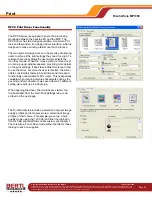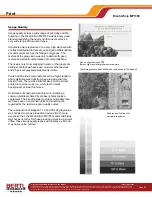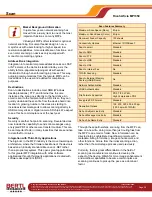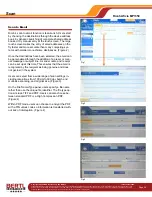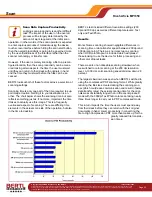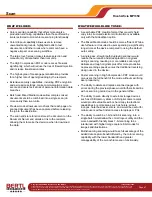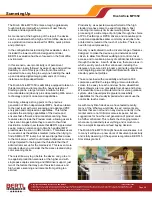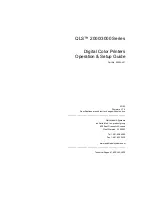
Copyright © 2006 MCA Internet, LLC dba BERTL.
13 November 2006
All Rights Reserved. The license under which this document is made available and applicable law prohibit any reproduction or further transmission of any portion of this document. This
document may only be viewed electronically through the www.BERTL.com Web site and may not be stored in electronic or hard copy format. Any reproduction of trademarks is strictly
prohibited. BERTL accepts no responsibility for any inaccuracies or omissions contained in this document.
Page 45
Ricoh Aficio MP1350
Original Handling Capabilities
While scanning speeds and duty volumes
may be based upon perfect standard letter
sized office grade, laser printer paper, there
is a much wider range of media substrates commonly
used and handled in the world every day.
Coated Surfaces Help Printing But Hinder Scanning:
Friction rollers, which grip and guide originals through the
document feeder, work very well on standard fibrous office
paper. Now consider the account department administra-
tor who scans hundreds of multi-part purchase orders
printed on carbonless paper or a customer service depart-
ment processing customer correspondents using coated
inkjet paper. Both media supplies include a chemical sur-
face layer that aids printing, but reduces friction that make
rollers slip and mis-feed.
Damaged Originals Can Create Rejections:
Perfectly crisp flat edges are an ideal medium to feed
through a document feeder. Now consider the paralegal
processing discovery documents complete with ripped out
corners left after staple removal or torn punch holes.
Some scanner mechanisms are designed to shutdown at
the merest detection of imperfection to avoid jamming
risks while others battle through with more forgiving fed
mechanisms that adjust to less than perfect conditions.
Size Matters:
Most scanner units include multiple friction rollers, which
share the workload and maintain a straight feed path.
Smaller originals like invoices, business cards, index
cards, etc. may only get captured and fed through the
scanner by one set of friction rollers, which can result in
more crooked mis-feeds and jams.
There is a Perfect Weight
The flexibility, resistance, and other physical factors of
standard office grade paper make it the ideal medium for
high speed scanning. As paper weights get further away
from the ideal, such as thin delicate newspaper or heavy
purchase warranty registration card, so do the incidences
of mis-feeds.
BERTL Tests Span Real World Situations:
To see how scanner feed mechanisms handle the wide
range of possible media types, BERTL analysts stack the
feeder with a wide range of media types and report on
how each original type is handled.
Scan
Original Handling Results
(scanned at 200dpi monochrome) setting
67 lb. Cover Stock Registration Cards
Fed Successfully
Yellow Pages (newspaper grade media)
Fed Successfully
Magazine with heavy glossy cover and 20
lb. glossy coated inside pages
Fed Successfully
Carbonless Purchase Order Forms
Fed Successfully
Business Cards
Not Supported
Coated Inkjet Paper
Fed Successfully
4’ x 6’ Index Cards
Fed Successfully
20 lb. bond office paper fed with leading
edge damage due to staple removal
Fed Successfully
Original Feeding Test Observations:.
The reversing duplex document feeder proved to be more
reliant to extremes of original scanning than some other
units tested recently (with only business cards falling be-
low the capabilities of the device), despite its two-pass
technology design. Unlike some other Ricoh document
feeders, there is no gap between the input paper path and
the white background plate that is used as the reference
for the platen scanner. The Ricoh Aficio MP1350 docu-
ment feeder handled all media types, large and small, thin
and thick with no issues. This places the Ricoh in a strong
position to be taken seriously as a production scanning
resource especially due to its added color scanning capa-
bility and dropout feature.




